Keynote Speakers
Claudiu Gradinaru, University of Toronto
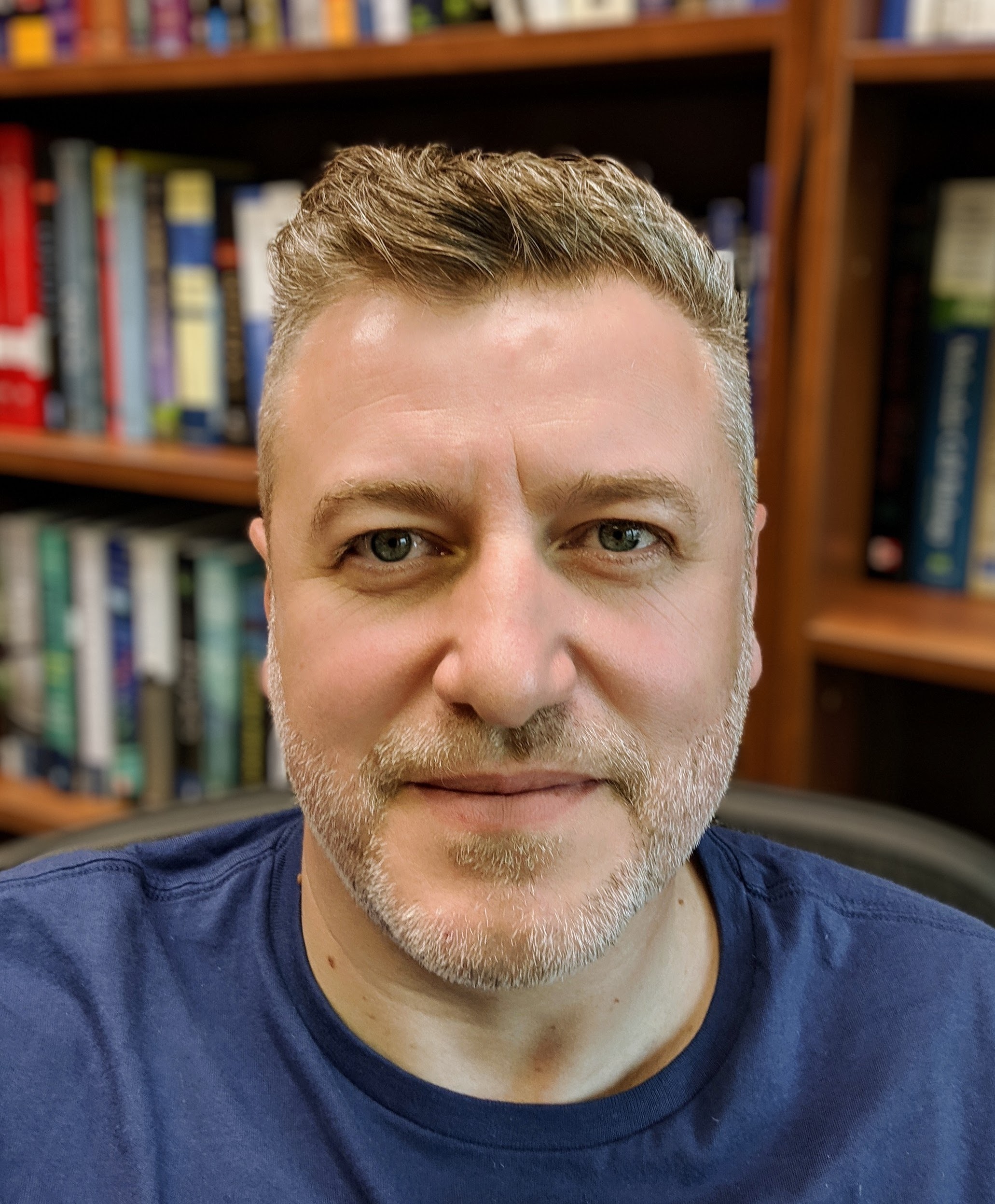 Claudiu Gradinaru obtained his Bachelor’s degree in Physics from the University of Bucharest, and his PhD in Biophysics at the VU University Amsterdam with a thesis on ultrafast spectroscopy of the primary events in photosynthesis. He is a Professor of Physics (and past Chair) in the Department of Chemical and Physical Sciences at University of Toronto, and currently serves as Vice-President of the Biophysical Society of Canada. The Gradinaru lab specializes in single-molecule fluorescence spectroscopy and imaging techniques, which enable quantitative measurements of biological molecules with nanometer accuracy and on time scales from picoseconds to minutes. His research focuses on studying the conformations, structural dynamics and interaction kinetics of intrinsically disordered proteins (IDPs) and G Protein Coupled receptors (GPCRs) under both in vitro and in vivo setting For more information visit the Gradinaru Lab website.
Claudiu Gradinaru obtained his Bachelor’s degree in Physics from the University of Bucharest, and his PhD in Biophysics at the VU University Amsterdam with a thesis on ultrafast spectroscopy of the primary events in photosynthesis. He is a Professor of Physics (and past Chair) in the Department of Chemical and Physical Sciences at University of Toronto, and currently serves as Vice-President of the Biophysical Society of Canada. The Gradinaru lab specializes in single-molecule fluorescence spectroscopy and imaging techniques, which enable quantitative measurements of biological molecules with nanometer accuracy and on time scales from picoseconds to minutes. His research focuses on studying the conformations, structural dynamics and interaction kinetics of intrinsically disordered proteins (IDPs) and G Protein Coupled receptors (GPCRs) under both in vitro and in vivo setting For more information visit the Gradinaru Lab website.
Kalina Hristova, Johns Hopkins University
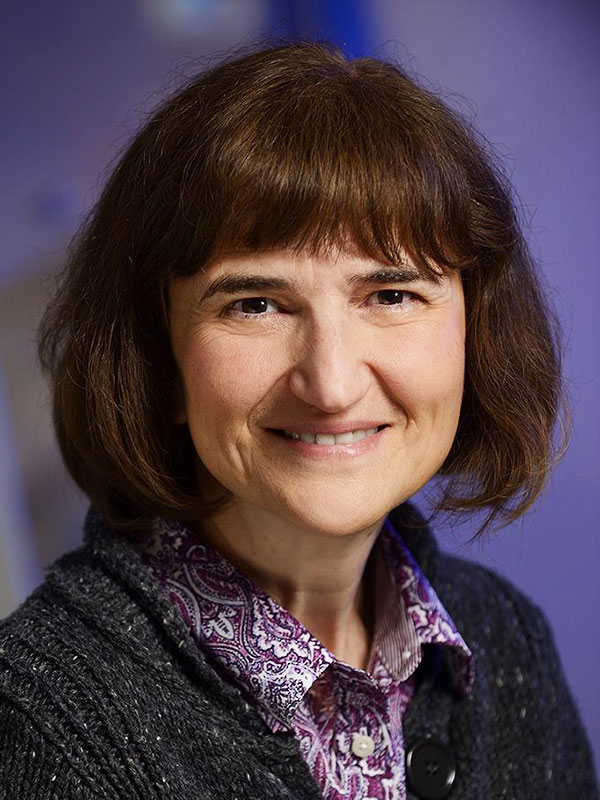 Kalina Hristova received her BS degree from the University of Sofia, Bulgaria, and her PhD degree from Duke University, USA. She did post-doctoral work at the University of California, Irvine. She joined the faculty at Johns Hopkins University as an Assistant Professor in 2001. Now she is a Professor and the Marlin U. Zimmerman Faculty Scholar in the Departments of Materials Science and Engineering and Biomedical Engineering at Johns Hopkins. Kalina is a recipient of the Margaret Oakley Dayhoff award from the American Biophysical Society. The main focus of the research in her laboratory is the thermodynamic and structural principles that underlie membrane protein folding and signal transduction across biological membranes. More information about Kalina’s research is available at the BMMB Laboratory website.
Kalina Hristova received her BS degree from the University of Sofia, Bulgaria, and her PhD degree from Duke University, USA. She did post-doctoral work at the University of California, Irvine. She joined the faculty at Johns Hopkins University as an Assistant Professor in 2001. Now she is a Professor and the Marlin U. Zimmerman Faculty Scholar in the Departments of Materials Science and Engineering and Biomedical Engineering at Johns Hopkins. Kalina is a recipient of the Margaret Oakley Dayhoff award from the American Biophysical Society. The main focus of the research in her laboratory is the thermodynamic and structural principles that underlie membrane protein folding and signal transduction across biological membranes. More information about Kalina’s research is available at the BMMB Laboratory website.
Anne Kenworthy, University of Virginia
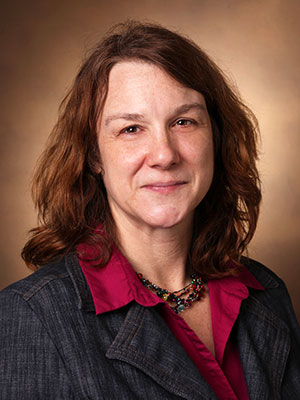 Anne Kenworthy, PhD is Associate Director of the Center for Membrane and Cell Physiology and Professor of Molecular Physiology and Biological Physics at the University of Virginia School of Medicine. She received her BA from Kenyon College and PhD from Duke University Medical Center, and carried out postdoctoral studies at The Johns Hopkins University and the NIH. The major goal of her research program is to elucidate the structure, dynamics, and function of membrane domains. To do so, she utilizes quantitative fluorescence-based approaches to analyze membrane domains and protein and lipid dynamics both in living cells and model membrane systems. Her work has lead to a number of important advances, including insights into the structure and dynamics of lipid rafts, the discovery of novel intracellular trafficking mechanisms, the identification of new mechanisms by which caveolin and caveolae control cellular functions, and the development of mathematical models to analyze diffusion and reaction-diffusion behaviors by confocal FRAP. For more information, visit the Kenworthy Lab website.
Anne Kenworthy, PhD is Associate Director of the Center for Membrane and Cell Physiology and Professor of Molecular Physiology and Biological Physics at the University of Virginia School of Medicine. She received her BA from Kenyon College and PhD from Duke University Medical Center, and carried out postdoctoral studies at The Johns Hopkins University and the NIH. The major goal of her research program is to elucidate the structure, dynamics, and function of membrane domains. To do so, she utilizes quantitative fluorescence-based approaches to analyze membrane domains and protein and lipid dynamics both in living cells and model membrane systems. Her work has lead to a number of important advances, including insights into the structure and dynamics of lipid rafts, the discovery of novel intracellular trafficking mechanisms, the identification of new mechanisms by which caveolin and caveolae control cellular functions, and the development of mathematical models to analyze diffusion and reaction-diffusion behaviors by confocal FRAP. For more information, visit the Kenworthy Lab website.
Graeme Milligan, University of Glasgow
 I am currently Professor of Molecular Pharmacology and Gardiner Professor of Biochemistry at University of Glasgow in Scotland, where I have been based since 1986. I also currently act as Dean of Research of the College of Medical, Veterinary and Life Sciences, the largest of the 4 Colleges that comprise the University. The major focus of my research centers on the pharmacology and function of G protein-coupled receptors, an area in which I have published some 450 articles. Please visit Prof. Milligan’s webpage for more information about his research.
I am currently Professor of Molecular Pharmacology and Gardiner Professor of Biochemistry at University of Glasgow in Scotland, where I have been based since 1986. I also currently act as Dean of Research of the College of Medical, Veterinary and Life Sciences, the largest of the 4 Colleges that comprise the University. The major focus of my research centers on the pharmacology and function of G protein-coupled receptors, an area in which I have published some 450 articles. Please visit Prof. Milligan’s webpage for more information about his research.
Taras Pogorelov, University of Illinois Urbana-Champagne
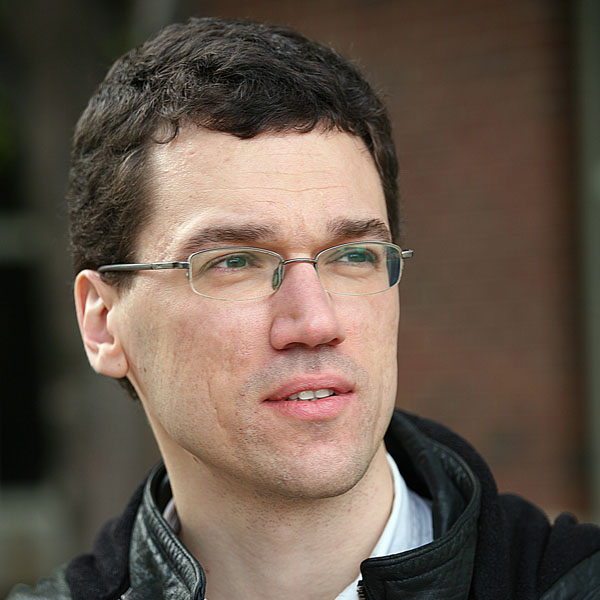 Taras Pogorelov received his Diploma in Electrical Biomedical Engineering from the Bauman Moscow State Technical University, Russia and then earned his PhD in Chemical Physics in 2006 from the University of Illinois at Urbana-Champaign, where he developed and applied molecular dynamics methods to study fast protein folding and protein-protein interactions. During his first postdoctoral training at UIUC he employed the state-of-the-art combination quantum dynamics, electronic structure, and classical molecular dynamics to study the chromophore of GFP in native protein environments. During his second postdoctoral training he co-developed a novel membrane mimetics model, which enhances lipid dynamics by 1-2 orders of magnitude. Currently, Taras is a Research Assistant Professor of Chemistry and Biophysics and a Senior Research Scientist in the School of Chemical Sciences at UIUC and his research focuses on development of new computational methods and workflows to address cell signaling over wide temporal and spatial scales along three research directions: 1) transmembrane signaling in health and disease, 2) cell membranes: functional lipids and membrane-active agents 3) in silico cell environment: protein dynamics and signaling. More information about Taras’ research is available at the Pogorelov Lab website.
Taras Pogorelov received his Diploma in Electrical Biomedical Engineering from the Bauman Moscow State Technical University, Russia and then earned his PhD in Chemical Physics in 2006 from the University of Illinois at Urbana-Champaign, where he developed and applied molecular dynamics methods to study fast protein folding and protein-protein interactions. During his first postdoctoral training at UIUC he employed the state-of-the-art combination quantum dynamics, electronic structure, and classical molecular dynamics to study the chromophore of GFP in native protein environments. During his second postdoctoral training he co-developed a novel membrane mimetics model, which enhances lipid dynamics by 1-2 orders of magnitude. Currently, Taras is a Research Assistant Professor of Chemistry and Biophysics and a Senior Research Scientist in the School of Chemical Sciences at UIUC and his research focuses on development of new computational methods and workflows to address cell signaling over wide temporal and spatial scales along three research directions: 1) transmembrane signaling in health and disease, 2) cell membranes: functional lipids and membrane-active agents 3) in silico cell environment: protein dynamics and signaling. More information about Taras’ research is available at the Pogorelov Lab website.
Catherine Royer, Rensselaer Polytechnic Institute
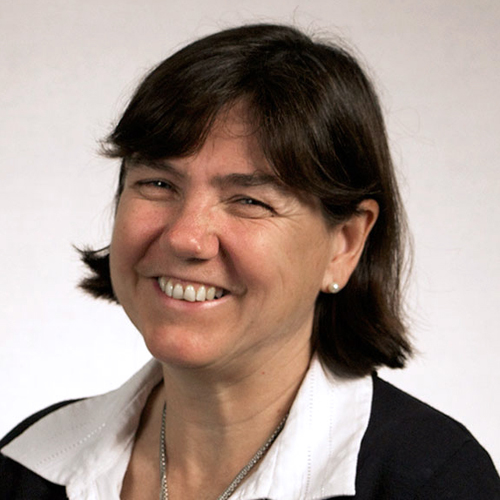 Catherine Royer obtained her Bachelor’s degree in Biochemistry in Paris at the University of Pierre and Marie Curie, and her PhD in Biochemistry at the University of Illinois at Urbana-Champaign. After moving back and forth between the US and France, in 2014 she became a Chaired Constellation Professor in Biocomputation and Bioinformatics at the Rensselaer Polytechnic Institute in Troy,NY. Royer developed fluorescence anisotropy-based assays for quantification of biomolecular interactions. She also developed numerically-based biomolecular interaction analysis software for complex and allosteric effects in protein oligomers. Her discovery of the molecular mechanisms of pressure effects on biomolecular structure and stability has allowed for structural and energetic characterization of low-lying excited states of proteins implicated in allosteric regulation of their function using fluorescence, NMR small angle x-ray scattering and computation. She has also implemented novel fluorescence imaging methodologies for quantifying proteins and their interactions in live cells, and responses to environmental changes, including pressure and nutrients.More information may be found at the Royer Lab website.
Catherine Royer obtained her Bachelor’s degree in Biochemistry in Paris at the University of Pierre and Marie Curie, and her PhD in Biochemistry at the University of Illinois at Urbana-Champaign. After moving back and forth between the US and France, in 2014 she became a Chaired Constellation Professor in Biocomputation and Bioinformatics at the Rensselaer Polytechnic Institute in Troy,NY. Royer developed fluorescence anisotropy-based assays for quantification of biomolecular interactions. She also developed numerically-based biomolecular interaction analysis software for complex and allosteric effects in protein oligomers. Her discovery of the molecular mechanisms of pressure effects on biomolecular structure and stability has allowed for structural and energetic characterization of low-lying excited states of proteins implicated in allosteric regulation of their function using fluorescence, NMR small angle x-ray scattering and computation. She has also implemented novel fluorescence imaging methodologies for quantifying proteins and their interactions in live cells, and responses to environmental changes, including pressure and nutrients.More information may be found at the Royer Lab website.
Suzanne Frances Scarlata, Worcester Polytechnic Institute
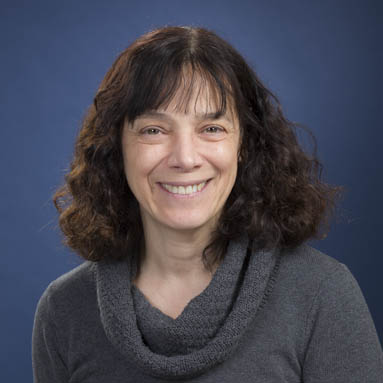 Suzanne Scarlata is currently a Whitcomb Professor at Worcester Polytechnic Institute. She received her PhD in Physical Chemistry from the University of Illinois and then became a Member of Research Staff at Bell Laboratories. Returning to academics, she was an Assistant Professor at Cornell University Medical College before moving to Stony Brook University where she is now a Professor Emeritus. Dr. Scarlata is a Past President of the Biophysical Society and a Fellow of the AAAS. Her research uses imaging methods to follow on calcium signals mediated through the Gαq / phospholipase Cβ signaling system in neuronal and smooth muscle cells.
Suzanne Scarlata is currently a Whitcomb Professor at Worcester Polytechnic Institute. She received her PhD in Physical Chemistry from the University of Illinois and then became a Member of Research Staff at Bell Laboratories. Returning to academics, she was an Assistant Professor at Cornell University Medical College before moving to Stony Brook University where she is now a Professor Emeritus. Dr. Scarlata is a Past President of the Biophysical Society and a Fellow of the AAAS. Her research uses imaging methods to follow on calcium signals mediated through the Gαq / phospholipase Cβ signaling system in neuronal and smooth muscle cells.
Lab website
Kai Zhang, University of Illinois
 Kai Zhang received his B.S. from the University of Science and Technology of China (USTC) and PhD from the University of California, Berkeley, and carried out his postdoctoral work at Stanford University. Dr. Zhang currently is an Associate Professor of Biochemistry at the University of Illinois at Urbana-Champaign. Dr. Zhang studies how signal transduction regulates cell fate determination and how normal signaling processes are compromised in disease conditions. Using live cell imaging and optogenetic control of signal transduction, we observe and perturb signaling modules to define cellular responses. Thier major goal is to gain insight into signaling mechanisms that regulate critical cellular functions such as cell proliferation, differentiation, migration, and apoptosis and to apply the insight to understanding and treating neurological disorders. Current efforts are focused on spatiotemporal control of growth-factor signal transduction by optogenetics, neurotrophic signaling pathway that primarily regulates neuronal differentiation and survival.
Kai Zhang received his B.S. from the University of Science and Technology of China (USTC) and PhD from the University of California, Berkeley, and carried out his postdoctoral work at Stanford University. Dr. Zhang currently is an Associate Professor of Biochemistry at the University of Illinois at Urbana-Champaign. Dr. Zhang studies how signal transduction regulates cell fate determination and how normal signaling processes are compromised in disease conditions. Using live cell imaging and optogenetic control of signal transduction, we observe and perturb signaling modules to define cellular responses. Thier major goal is to gain insight into signaling mechanisms that regulate critical cellular functions such as cell proliferation, differentiation, migration, and apoptosis and to apply the insight to understanding and treating neurological disorders. Current efforts are focused on spatiotemporal control of growth-factor signal transduction by optogenetics, neurotrophic signaling pathway that primarily regulates neuronal differentiation and survival.
Ionel Popa, University of Wisconsin-Milwaukee
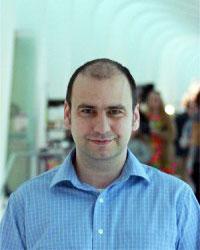 Ionel Popa received his PhD in Physical and Analytical Chemistry from University of Geneva in 2010. He then pursued a postdoc in Biophysics at Columbia University. In fall 2015, he joined the University of Wisconsin-Milwaukee, where he currently holds the rank of Associate Professor. Dr. Popa’s lab develops and uses cutting-edge techniques to study the physics of proteins under force. He combines single molecule force spectroscopy and bio-materials design with protein engineering, surface chemistry and computer programming. His long-term goal is to understand how proteins operating under force use their folding state as a mechanical signal, and how this signal propagates from single molecule level to tissue and organs. For more information, please visit the Popa Lab website.
Ionel Popa received his PhD in Physical and Analytical Chemistry from University of Geneva in 2010. He then pursued a postdoc in Biophysics at Columbia University. In fall 2015, he joined the University of Wisconsin-Milwaukee, where he currently holds the rank of Associate Professor. Dr. Popa’s lab develops and uses cutting-edge techniques to study the physics of proteins under force. He combines single molecule force spectroscopy and bio-materials design with protein engineering, surface chemistry and computer programming. His long-term goal is to understand how proteins operating under force use their folding state as a mechanical signal, and how this signal propagates from single molecule level to tissue and organs. For more information, please visit the Popa Lab website.
